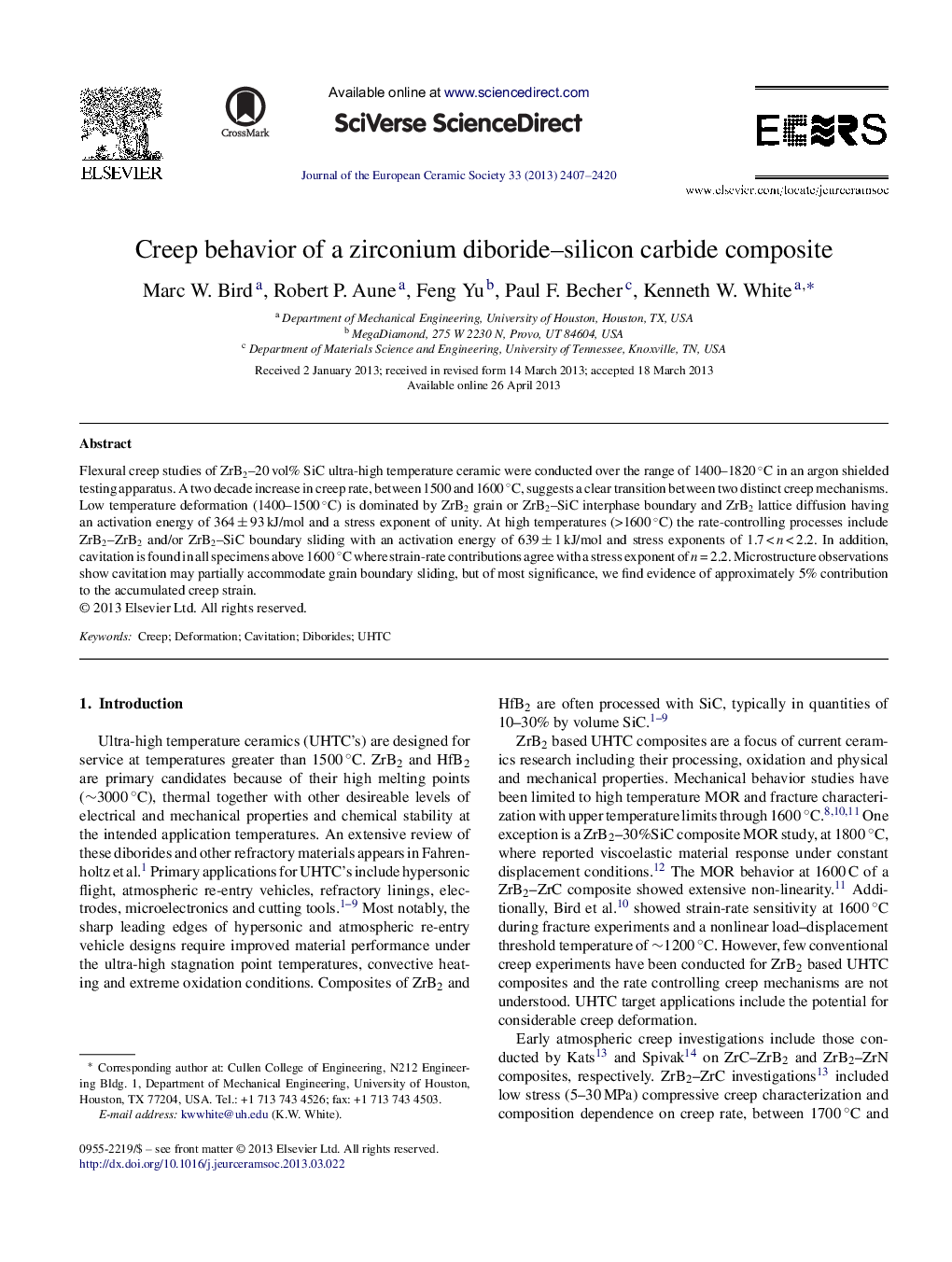| Article ID | Journal | Published Year | Pages | File Type |
|---|---|---|---|---|
| 1475523 | Journal of the European Ceramic Society | 2013 | 14 Pages |
Flexural creep studies of ZrB2–20 vol% SiC ultra-high temperature ceramic were conducted over the range of 1400–1820 °C in an argon shielded testing apparatus. A two decade increase in creep rate, between 1500 and 1600 °C, suggests a clear transition between two distinct creep mechanisms. Low temperature deformation (1400–1500 °C) is dominated by ZrB2 grain or ZrB2–SiC interphase boundary and ZrB2 lattice diffusion having an activation energy of 364 ± 93 kJ/mol and a stress exponent of unity. At high temperatures (>1600 °C) the rate-controlling processes include ZrB2–ZrB2 and/or ZrB2–SiC boundary sliding with an activation energy of 639 ± 1 kJ/mol and stress exponents of 1.7 < n < 2.2. In addition, cavitation is found in all specimens above 1600 °C where strain-rate contributions agree with a stress exponent of n = 2.2. Microstructure observations show cavitation may partially accommodate grain boundary sliding, but of most significance, we find evidence of approximately 5% contribution to the accumulated creep strain.
